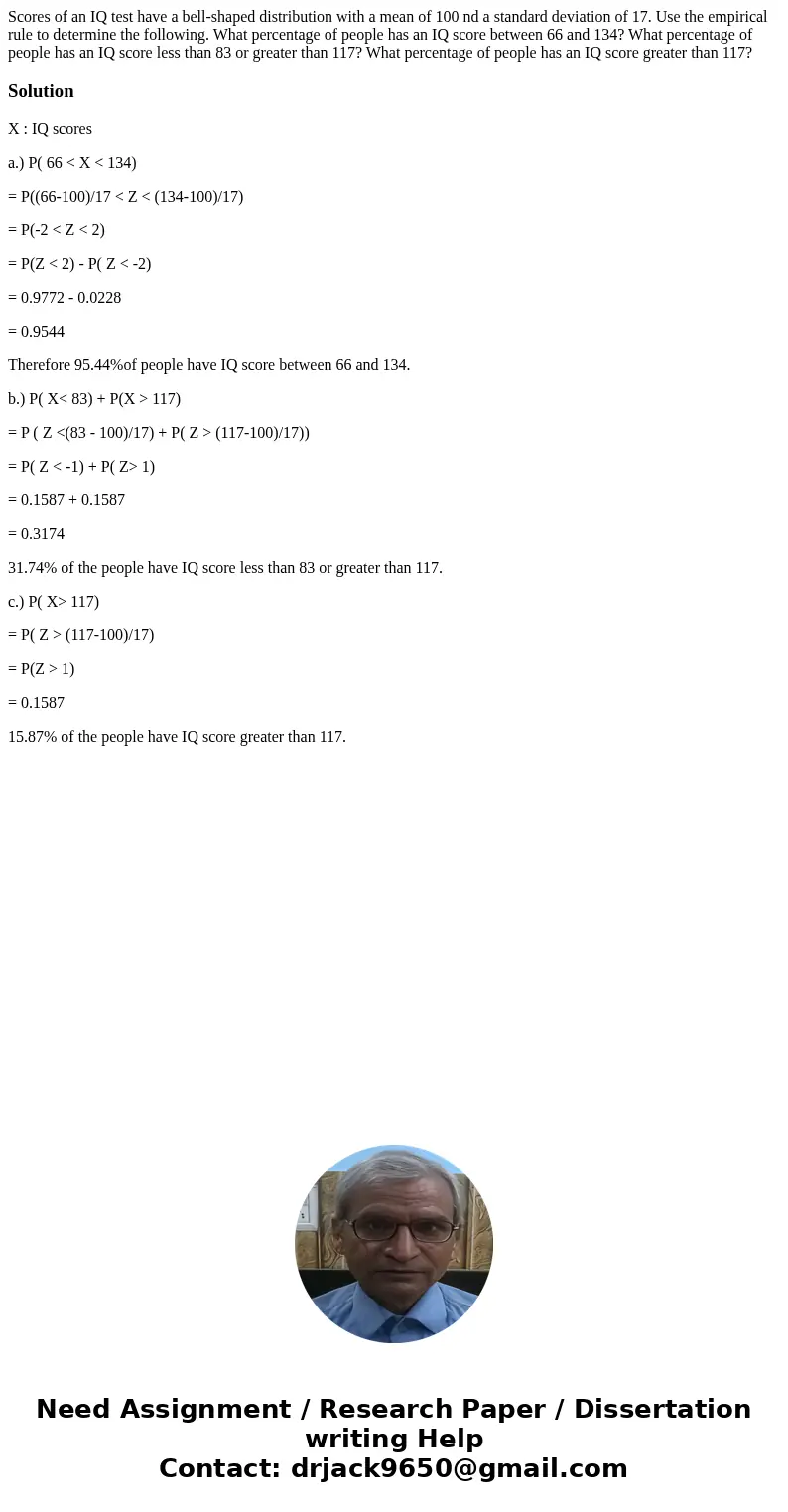Scores of an IQ test have a bellshaped distribution with a m
Scores of an IQ test have a bell-shaped distribution with a mean of 100 nd a standard deviation of 17. Use the empirical rule to determine the following. What percentage of people has an IQ score between 66 and 134? What percentage of people has an IQ score less than 83 or greater than 117? What percentage of people has an IQ score greater than 117?
Solution
X : IQ scores
a.) P( 66 < X < 134)
= P((66-100)/17 < Z < (134-100)/17)
= P(-2 < Z < 2)
= P(Z < 2) - P( Z < -2)
= 0.9772 - 0.0228
= 0.9544
Therefore 95.44%of people have IQ score between 66 and 134.
b.) P( X< 83) + P(X > 117)
= P ( Z <(83 - 100)/17) + P( Z > (117-100)/17))
= P( Z < -1) + P( Z> 1)
= 0.1587 + 0.1587
= 0.3174
31.74% of the people have IQ score less than 83 or greater than 117.
c.) P( X> 117)
= P( Z > (117-100)/17)
= P(Z > 1)
= 0.1587
15.87% of the people have IQ score greater than 117.

 Homework Sourse
Homework Sourse